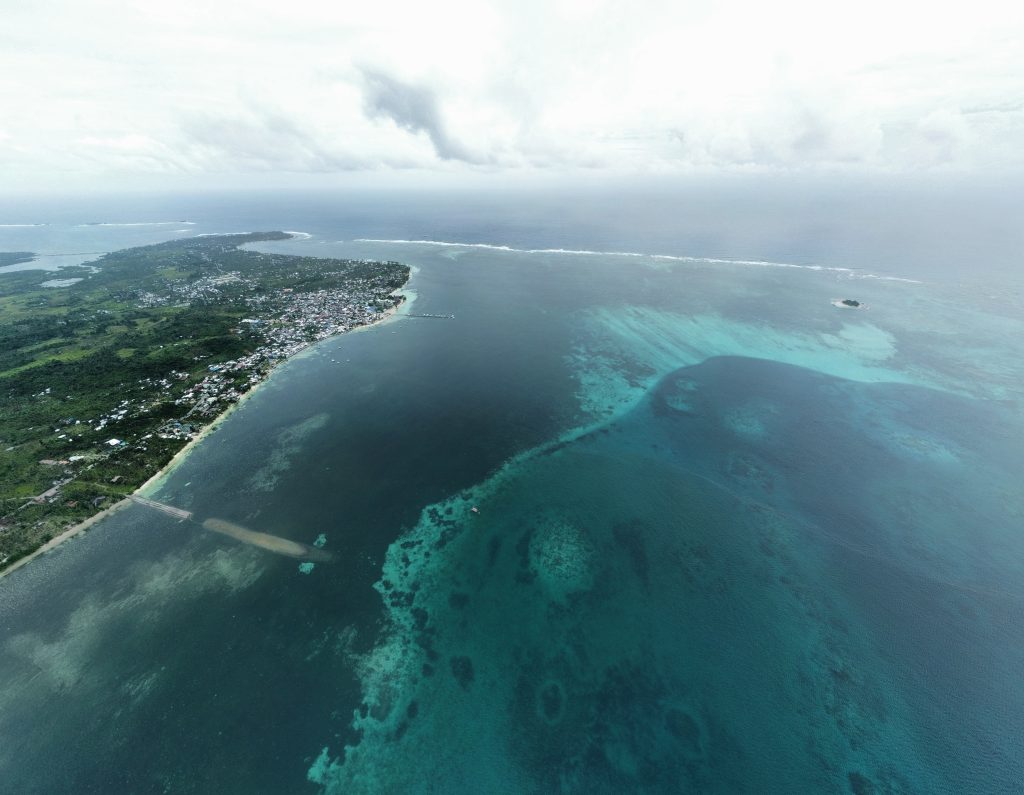In my research before I began my passage through the Philippines, one place in particular stood out as ominous; the Hinatuan Passage. This place has strong currents and whirlpools and I had to pass through. The sailing directions states: “The current attains a velocity of about 7 knots between Kabo Island and Rasa Island. A velocity of 10.5 to 11 knots has been reported… There are heavy rips and swirls at certain stages from Kabo Reef to Hinuatuan Island.”
All advice said to be planning this passage carefully, and best is to pass through on a neap tide, when tidal differences are smallest. I read all this a few months before arriving to the Philippines, and when the time came to set sail I had too much on my mind to be planning further, and since we were running short of time we had to set sail and hope for the best.

Full moon
We had been sailing for a week when we were getting closer to the Hinatuan Passage and I finally started planning for it. I remember that night I looked up at the sky, seeing the full moon and thinking, “shoot, it’s gonna be spring tide and we are going to be early for the passage.” But as I sat down to look at the actual tides, I discovered that we had favorable tides! I will try to describe it without being too technical.
Mixed tides
Here in the Philippines we have mixed tides, meaning sometimes we have high and low tides twice a day (semidiurnal tides) and sometimes we have high and low tides only once a day (diurnal tides). In between these two tides we have a mix of both. Basically, when you have tides twice a day, the tidal difference will be smaller than if you had tides only once a day.
The image below describes it well. It was spring tide but it was also semidiurnal, which means the tidal difference was smaller. If we had waited for the neap tide (half moon), the tides would go towards diurnal tides, and the tidal difference would be greater. In other words, we had the tides in our favor and it was time to go!
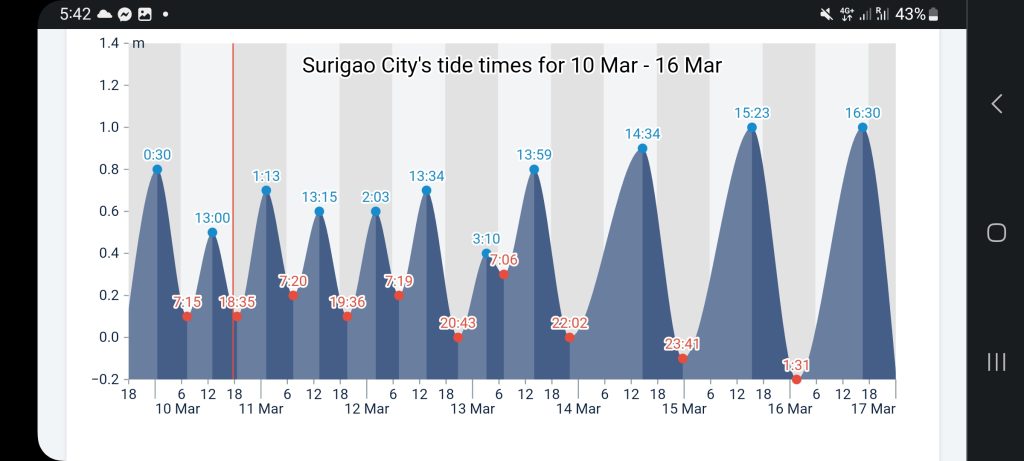
Surigao Strait
We were on the island of Leyte and first we had to cross another body of water that was equally ominous, only that I hadn’t been reading about it too much. Sailors were speaking about this passage and I knew it had currents, only I didn’t know quite how much. Our semidiurnal tides was in our favor also this day, and we were lucky to have good wind to make the crossing quickly.
The Surigao Strait is a wide channel of 10-15 miles where the water from the Pacific is constantly pouring into the Bohol Sea. It’s current can run as fast as 8 knots in places when in full flood. When we sailed, we had a relatively stable 2-3 knots (estimated) of cross current on our way across. We had the wind in from the beam, but the current had us sail on a close reach, pointing 20-30 degrees away from our destination.
We had winds up to fresh breeze, so it was a fast sail across, with speeds between 6 and 7 knots, and we sailed with the sails on the first reef. Towards the end we had waves in from behind and were going a little too fast, over 10 knots of speed. We reefed the main to the second reef and kept going with good speeds, up to 8 knots.
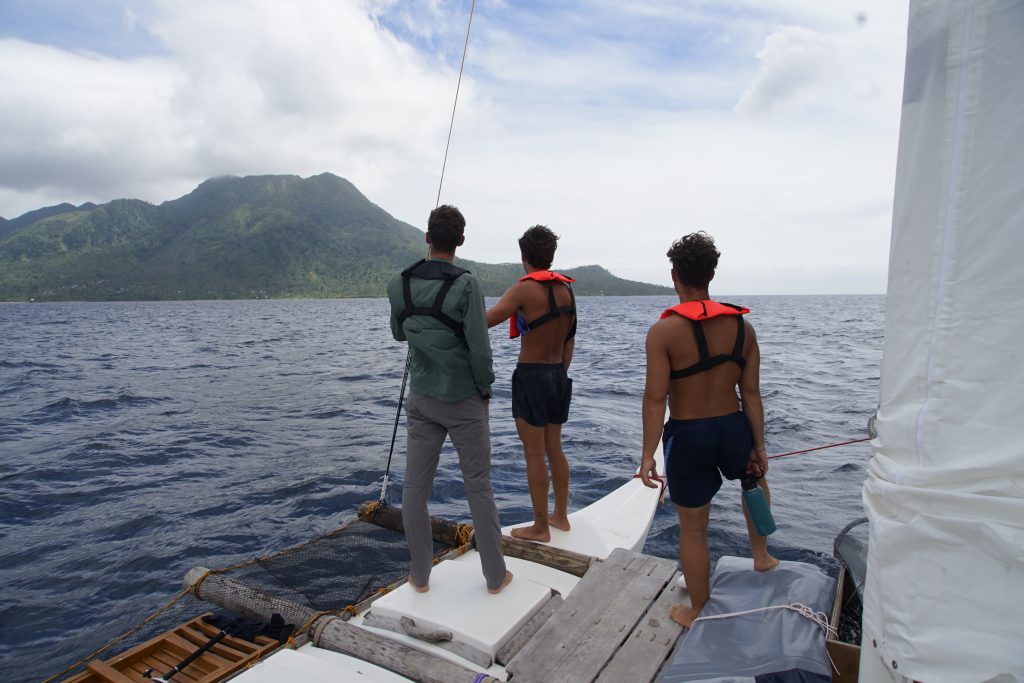
Surigao harbor
Coming closer to Surigao city I noticed something peculiar. None of the regular local fishing boats were out and about. We had gotten used to them always being around, but not today. I figured they didn’t like the weather and had it confirmed as we drew closer to shore and we passed by our first fishing boat. I waved and smiled and he waved back, gave me a rare smile and a tip of the hat, as if saying well done. As we drew closer still, the waves kept coming and I was hoping to find some refuge further in the harbor. We ended up anchoring as close as we could to the harbor entrance and we fit in well with the other local boats. Nobody seemed to mind us at all.

Houses on stilts
We were anchored right next to a ramshackle village on stilts, with houses made of part palm leaves and part bags and tarps draped over damaged areas. It was quite a sight, as we pondered about the conditions they were living in. The boys went into town for lunch and were able to get to know some of the kids, as white people stands out like nothing else in cities like these, and as they were paddling across they also got to see the condition of the water with x amount of excrement floating by. Later that night the wind and waves ceased and we found another anchorage a bit further out from the hustle and bustle of the city.
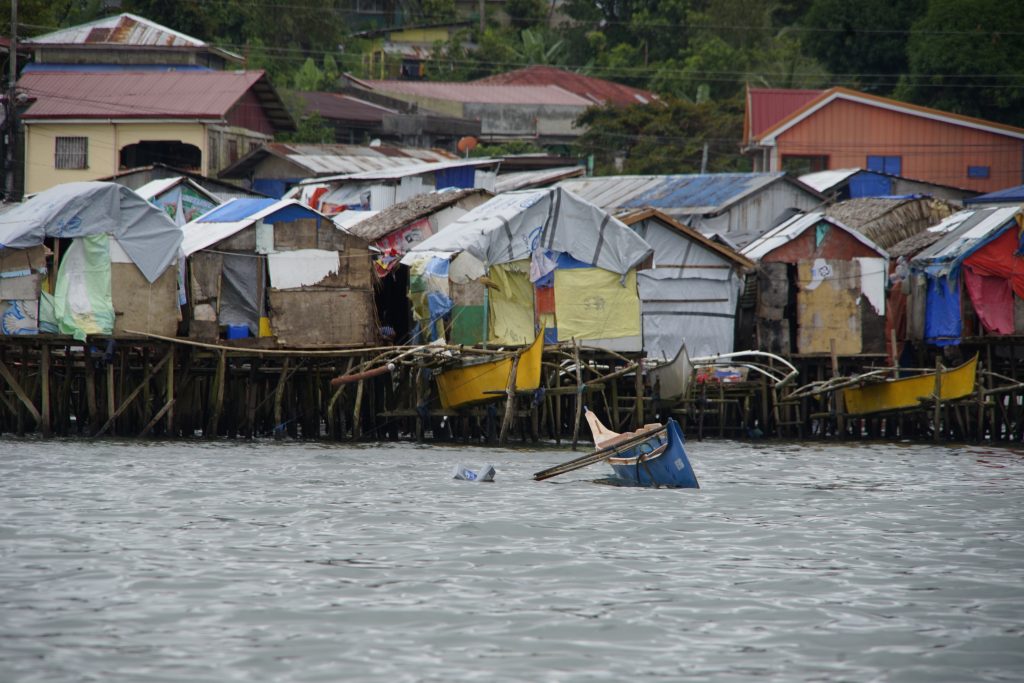
The battle plan
Next day was the big day. We were going to tackle the Hinatuan Passage. This was the battle plan: We had to be by Raza Island by High Tide as this is when the currents switch and it is safe to pass. We were sailing from west to east and therefore wanted the high tide as we would have the tide with us for the rest of the passage. This turned out to be good timing anyway as high tide was supposed to be about 12:40. My plan was to leave at around 11 to allow some time to make it the roughly 7 miles from the harbor to the island. We might experience some counter current as we were drawing closer, but I figured it would be worth it to make it to the dangerous point at the right time.

How it actually went
I was nervous as time drew closer. Sitting and counting minutes, wondering if I had this right. I considered leaving a little later, around 11:30, but decided to stick to the battle plan. Before we left the wind had picked up again to a moderate breeze and we had some waves against us. As we came out of Bilang-bilang Bay, we had the waves behind us. These waves turned out to be a bigger problem than imagined.
The current from the Hinatuan Passage started to hit us as soon as we had left the bay, and as we got closer to Raza Island the current grew stronger, coming straight against us. Our boat speed was a crawling 2 knots, and in good sailing conditions, making me believe that the counter current was 3-4 knots. As the current was hitting the waves that came from the opposite direction, they stood up and behaved wildly, as if we were in a huge river. I considered turning back, but that would also be a dangerous maneuver. The tide would soon turn and we will be safe.
We were battling these river like conditions for about half an hour before the waves started to settle. Before we knew it, we were right next to the infamous Raza Island right on time, just as the tide turned. It turned out to be a bit earlier than expected, around 12:10, but that was fine by me as it ment less mess in the river. The wind also decided to die as we sailed by and the world seemed to be on break for a minute, but as I started to feel the currents move again after only 10 minutes I kicked on the engine and opted for a quick escape.
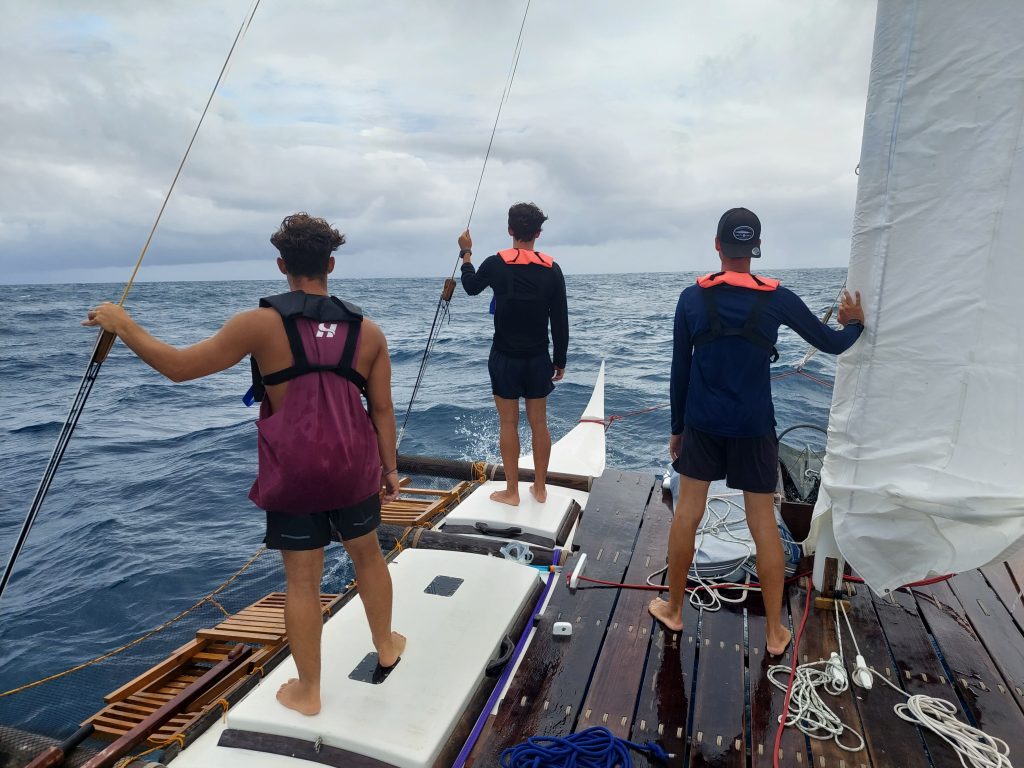
Place of refuge
The winds were forecasted to increase to a fresh breeze with gusts of strong breeze, so I opted to take a break halfway through the passage. We pointed our bow south towards Talavera Island. By this time the waves and winds were building and I was happy to escape. By Talavera we had to look around for an anchorage as the strong currents in the area wash away any sand, but we found a nice spot in dead coral by the edge of a reef. Another stunningly beautiful anchorage. We spent the rest of the day exploring the reef and the beach on the island.

Last challenge
Next day was only forecasted 9 knots of wind through the rest of the Hinatuan Passage. That sounds like nice sailing to me and we set off optimistically the next morning. Unfortunately, the weather hadn’t been reading the weather reports and decided to stick with the heavy winds from the day before. We did the passage in fresh breeze with waves up to 6 feet. At least we didn’t notice much of the current in this wider part of the passage and we had a sporty day of sailing.
Some place a long time ago I read about the Dapa Channel being just as bad as the Hinatuan Passage. This little channel was the only thing separating us from the destination and half way point of our journey. I didn’t have internet to research further, but I figured it would be good idea to go through it as the tide was turning. Luckily I had looked at the times earlier and we were able to anchor up nearby to time the final approach.
We came to the channel right at low tide, and we could see how this channel could be dangerous as it is super narrow and in a place where a lot of water moves! Even as we passed through we saw eddies in certain places. We had full sails up and a gust took us flying through the last bit of channel, with over 10 knots of boat speed.

Cloud 9
Finally, all the hurdles had been passed and we arrived at our destination, General Luna at Siargao Island. This marked the half way point of our sail and where one of our team members would leave us. For Matt, time was up and he had to go home. But not before we were able to enjoy a few days of good times together and some surf at the world famous Cloud 9.
